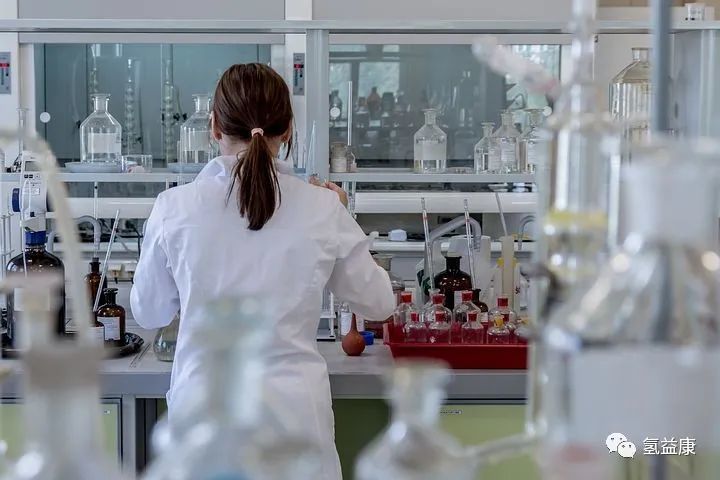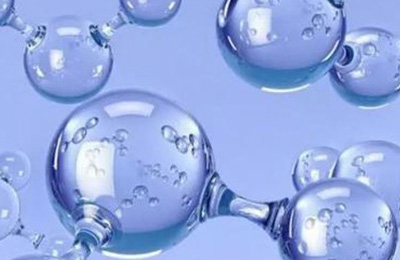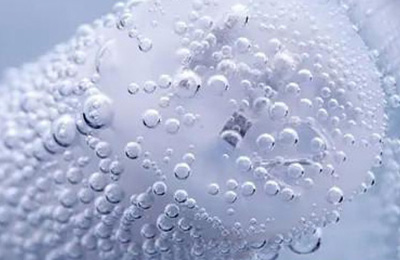电解水和氢气生物学研究(3)
-
Tanaka, Y.; Uchinashi, S.; Saihara, Y.; Kikuchi, K.; Okaya, T.; Ogumi, Z. Dissolution of hydrogen and the ratio of the dissolved hydrogen content to the produced hydrogen in electrolyzed water using SPE water electrolyzer. Electrochim. Acta 2003, 48, 4013–4019. [Google Scholar] [CrossRef]
-
Shirahata, S.; Hamasaki, T.; Teruya, K. Advanced research on the health benefit of reduced water. Trends Food Sci. Technol. 2012, 23, 124–131. [Google Scholar] [CrossRef]
-
Fujiyama, Y.; Kitahora, T. Alkaline electrolytic water (alkali ions water) for drinking water in medicine. In Mizu No Tokusei to Atarashii Riyo Gijutsu; Enu-Ti-Esu: Tokyo, Japan, 2004; pp. 348–457. [Google Scholar]
-
Tashiro, H.; Kitahora, T.; Fujiyama, Y.; Banba, T. Clinical evaluation of alkali-ionized water for chronic diarrhea-placebo-controlled double blind study. Dig. Absorpt. 2000, 23, 52–56. [Google Scholar]
-
Yan, P.; Daliri, E.B.; Oh, D.H. New Clinical Applications of Electrolyzed Water: A Review. Microorganisms 2021, 9, 136. [Google Scholar] [CrossRef]
-
Yoon, Y.S.; Kim, D.H.; Kim, S.K.; Song, S.B.; Uh, Y.; Jin, D.; Qi, X.F.; Teng, Y.C.; Lee, K.J. The melamine excretion effect of the electrolyzed reduced water in melamine-fed mice. Food Chem. Toxicol. 2011, 49, 1814–1819. [Google Scholar] [CrossRef] [PubMed]
-
Hayashi, H.; Kawamura, M. Clinical Applications of Electrolyzed-Reduced Water. In Animal Cell Technology: Basic & Applied Aspects; Shirahata, S., Teruya, K., Katakura, Y., Eds.; Springer: Dordrecht, The Netherlands, 2002; Volume 12, pp. 31–36. [Google Scholar]
-
Hanaoka, K. Antioxidant effects of reduced water produced by electrolysis of sodium chloride solutions. J. Appl. Electrochem. 2001, 31, 1307–1313. [Google Scholar] [CrossRef]
-
Kashiwagi, T.; Kabayama, S.H.; Takaki, M.; Teruya, K.; Otubo, K.; Morisawa, S.; Shirahata, S. Suppression of Oxidative Stress-Induced Apoptosis of Neuronal Cells by Electrolyzed-Reduced Water. Anim. Cell Technol. Meets Genom. 2005, 2, 257–260. [Google Scholar]
-
Park, E.J.; Ryoo, K.; Lee, Y.; Lee, J.; Lee, M. Protective effect of electrolyzed reduced water on the paraquat-induced oxidative damage of human lymphocyte DNA. J. Korean Soc. Appl. Biol. Chem. 2005, 48, 155–160. [Google Scholar]
-
Lee, M.Y.; Kim, Y.K.; Ryoo, K.K.; Lee, Y.B.; Park, E.J. Electrolyzed-reduced water protects against oxidative damage to DNA, RNA, and protein. Appl. Biochem. Biotechnol. 2006, 135, 133–144. [Google Scholar] [CrossRef]
-
Oda, M.; Kusumoto, K.; Teruya, K.; Hara, T.; Maki, T.; Kabayama, S.; Katakura, Y.; Otsubo, K.; Morisawa, S.; Hayashi, H.; et al. Electrolyzed and natural reduced water exhibit insulin-like activity on glucose uptake into muscle cells and adipocytes. In Animal Cell Technology: Products from Cells, Cells as Products, Proceedings of the 16th ESACT Meeting, Lugano, Switzerland, 25–29 April 1999; Springer: Dordrecht, The Netherlands, 2002; pp. 425–427. [Google Scholar]
-
Li, Y.; Nishimura, T.; Teruya, K.; Maki, T.; Komatsu, T.; Hamasaki, T.; Kashiwagi, T.; Kabayama, S.; Shim, S.Y.; Katakura, Y.; et al. Protective mechanism of reduced water against alloxan-induced pancreatic beta-cell damage: Scavenging effect against reactive oxygen species. Cytotechnology 2002, 40, 139–149. [Google Scholar] [CrossRef]
-
Naito, Y.; Takagi, T.; Uchiyama, K.; Tomatsuri, N.; Matsuyama, K.; Fujii, T.; Yagi, N.; Yoshida, N.; Yoshikawa, T. Chronic administration with electrolyzed alkaline water inhibits aspirin-induced gastric mucosal injury in rats through the inhibition of tumor necrosis factor-alpha expression. J. Clin. Biochem. Nutr. 2002, 32, 69–81. [Google Scholar] [CrossRef]
-
Hamaskai, T.; Sugihara, K.; Teruya, S.; Kabayama, Y.; Katakura, K.; Otsubo, S.; Morisawa, S.; Shirahata, S. The suppressive effect of electrolyzed reduced water on lipid peroxidation. In Animal Cell Technology: Basic & Applied Aspects, Proceedings of the Fifteenth Annual Meeting of the Japanese Association for Animal Cell Technology (JAACT), Fuchu, Japan, 11–15 November 2002; Springer: Dordrecht, The Netherlands, 2003; Volume 13, pp. 381–385. [Google Scholar]
-
Jin, D.; Ryu, S.H.; Kim, H.W.; Yang, E.J.; Lim, S.J.; Ryang, Y.S.; Chung, C.H.; Park, S.K.; Lee, K.J. Anti-diabetic effect of alkaline-reduced water on OLETF rats. Biosci. Biotechnol. Biochem. 2006, 70, 31–37. [Google Scholar] [CrossRef] [PubMed]
-
GU, H.Y.; Itokawa, Y.; Maenaka, T.; Nakamura, T.; Oshima, M.; Hasegawa, T.; Suzuki, I.; Ishida, T. Anti-oxidation Effect and Anti Type 2 Diabetic Effect in Active Hydrogen Water. Med. Biol. 2006, 150, 384–392. [Google Scholar]
-
Yokoyama, J.-m.K.a.K. Effects of alkaline ionized water on spontaneously diabetic GK-rats fed sucrose. Korea. J. Lab. Anim. Sci. 1997, 13, 187–190. [Google Scholar]
-
Shirahata, S.; Nishimura, T.; Kabayama, S.; Aki, D.; Teruya, K.; Otsubo, K.; Morisawa, S.; Ishii, Y.; Gadek, Z.; Katakura, Y. Anti-oxidative water improves diabetes. In Animal Cell Technology: From Target to Market, Proceedings of the 17th ESACT Meeting, Tylösand, Sweden, 10–14 June 2001; Springer: Dordrecht, The Netherlands, 2001. [Google Scholar]
-
Komatsu, T.; Katakura, Y.; Teruya, K.; Otsubo, K.; Morisawa, S.; Shirahata, S. Electrolyzed reduced water induces differentiation in K-562 human leukemia cells. In Animal Cell Technology: Basic & Applied Aspects, Proceedings of the Fifteenth Annual Meeting of the Japanese Association for Animal Cell Technology (JAACT), Fuchu, Japan, 11–15 November 2002; Springer: Dordrecht, The Netherlands, 2003; pp. 387–391. [Google Scholar]
-
Jun, Y.; Teruya, K.; Katakura, Y.; Otsubo, K.; Morisawa, S.; Shirahata, S. Suppression of invasion of cancer cells and angio-genesis by electrolyzed reduced water. In In Vitro Cellular & Developmental Biology; Springer: Dordrecht, The Netherlands, 2004; Volume 40. [Google Scholar]
-
Saitoh, Y.; Okayasu, H.; Xiao, L.; Harata, Y.; Miwa, N. Neutral pH hydrogen-enriched electrolyzed water achieves tumor-preferential clonal growth inhibition over normal cells and tumor invasion inhibition concurrently with intracellular oxidant repression. Oncol. Res. 2008, 17, 247–255. [Google Scholar] [CrossRef]
-
Nishikawa, R.; Teruya, K.; Katakura, Y.; Osada, K.; Hamasaki, T.; Kashiwagi, T.; Komatsu, T.; Li, Y.; Ye, J.; Ichikawa, A.; et al. Electrolyzed Reduced Water Supplemented with Platinum Nanoparticles Suppresses Promotion of Two-stage Cell Transformation. Cytotechnology 2005, 47, 97–105. [Google Scholar] [CrossRef] [PubMed]
-
Nishikawa, H.; Teruya, K.; Katakura, Y.; Otsubo, K.; Morisawa, S.; Xu, Q.; Shirahata, S. Suppression of two-stage cell transformation by electrolyzed reduced water containing platinum nanoparticles. In Animal Cell Technology: Basic & Applied Aspects, Proceedings of the Ninth Annual Meeting of the Japanese Association for Animal Cell Technology, Yokohama, Japan, 1–4 September 1996; Springer: Dordrecht, The Netherlands, 2006; Volume 14, pp. 113–119. [Google Scholar]
-
Hanaoka, K.; Sun, D.; Lawrence, R.; Kamitani, Y.; Fernandes, G. The mechanism of the enhanced antioxidant effects against superoxide anion radicals of reduced water produced by electrolysis. Biophys. Chem. 2004, 107, 71–82. [Google Scholar] [CrossRef]




